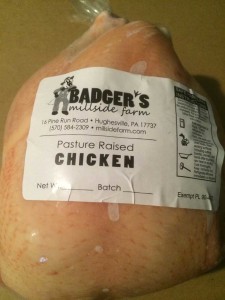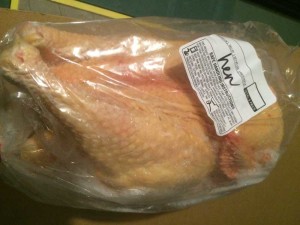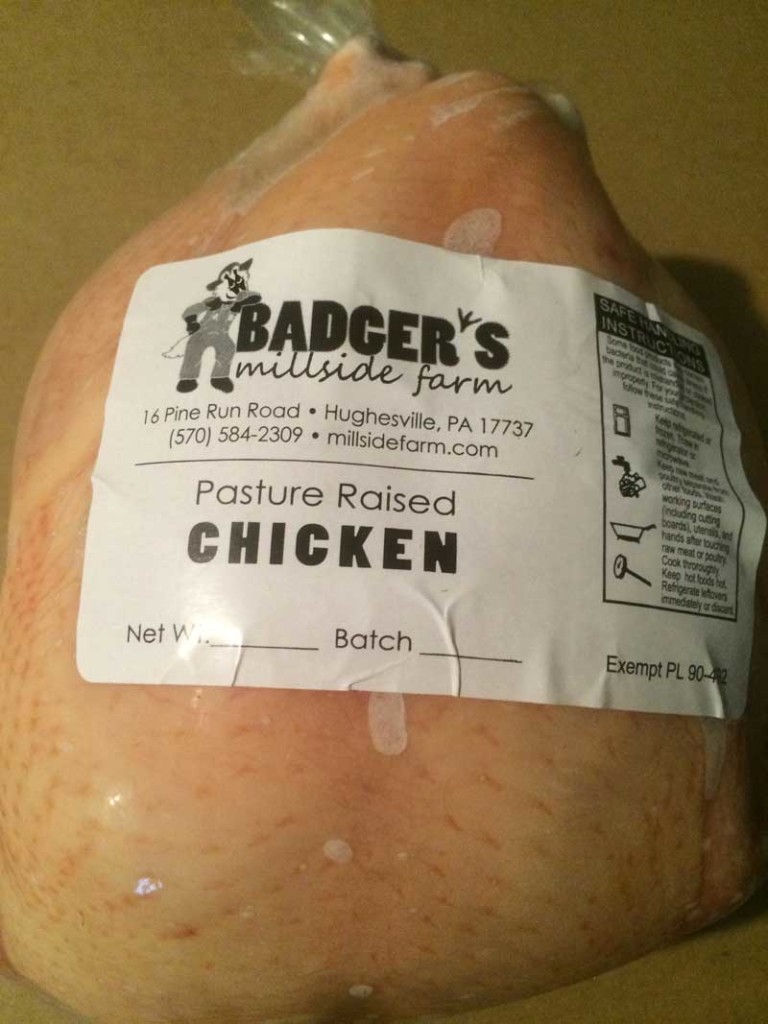Featured, Pastured Chicken
Debunking the Fresh Chicken Fallacy

There’s nothing wrong with frozen chicken. There, I said it. Let the lightning strike me down.
In recent years, we’ve made the decision to supply all our chicken frozen, and it has been one of the best decisions we made with regard to our current production and distribution model. We realize, however, that many among us have been trained to think frozen chicken is bad.
The problem with frozen chicken is that you can’t freeze low quality meat at the end of its shelf life in poor packaging and expect it to get better in the freezer. But that’s often what we do. Here’s a common scenario that I have used.
I’d go to the grocery store, buy a pack of fresh, smelly boneless-skinless breasts in a Styrofoam tray (our chicken doesn’t have the telltale funk). Often, I bought more than I needed, so the extra pack of chicken would go into the freezer in whatever flimsy packaging I bought it in. To be fair, that packaging is not designed for the freezer. Nevertheless, I did it. Then after a couple of months, I’d pull it back out to thaw, which was often done in the microwave.

I started with poor quality chicken, treated it badly, and had a poor eating experience as a result.
When you get a frozen chicken from Badgers, it’s a different experience all together. Our chicken is packaged in a shrink bag that conforms to the shape of the bird. Our packaging is designed to let air escape. As a result, it resists the drying out process you often see with “regular” bags.
If you’re buying chicken from a local producer, inspect the packaging. Many producers will shortcut the packaging and use lightweight poly bags. At best, these poly bags are good for short-term freezer storage (less than three months).
We have chicken in our personal freezer right now that is approaching a year old and shows no visible sign of its true age. If I cooked a frozen chicken and a fresh chicken, you wouldn’t know the difference.
How to Deal with a Frozen Chicken
Dealing with frozen chicken in the kitchen does require some care. If you plan to have chicken for dinner, and you forgot to thaw the chicken, just order take-out. Do not put a frozen pasture-raised chicken or turkey into the microwave to thaw. And never, ever cook a frozen bird. These are horrible abuses of your food, and the experience will not be pleasant. Never subject your family to this treatment or it will earn you a bad kitchen reputation.
Sometimes, with small cuts, such as breasts, you might be able to thaw it in a sink of water, but I wouldn’t generally wouldn’t recommend it. Let the package thaw slowly in the refrigerator overnight and ensure it’s completely thawed before cooking.
A Producer’s Point-of-View on Frozen
At a small scale, there are lots of reasons to prefer to handle frozen chicken. We’re able to consolidate our batches of chickens. It’s more efficient to raise and process two or three larger batches of chickens than it is to raise and process six small batches. And if we’re able to more efficient, we’re able to moderate our price more.
It’s easier and safer to handle frozen chickens. Many of our customers pick up during work hours, so handling frozen chickens ensures everything stays safe. Trying to hold chicken below 40 degrees for long periods of time, especially in the summer during transit times, is a food safety issue. If you let a frozen chicken in your car for an hour while you run errands, it will hold up; the same can’t be said for a fresh chicken.
The best way to order our frozen, delicious chicken is through our chicken club.

